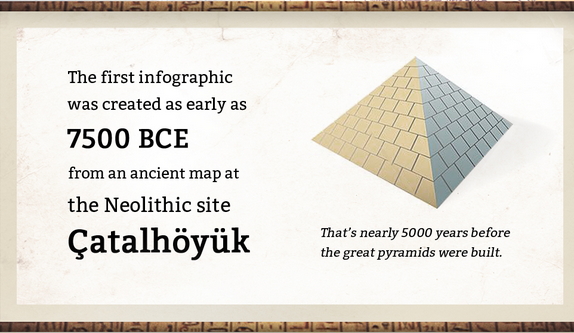"It is better to see once than hear a hundred times" - this saying describes the essence of infographics very well. It has been shown that visual information is perceived much more easily than information we hear or read from a text. A picture can say a lot more and we can understand it much faster than what any other information channel can provide us with.
What are infographics?
Infographics are a graphical and visual representation of information, data or knowledge, which are intended to show complex information briefly and clearly. In other words, when we look at a table of numbers, we have to read and analyse them, then develop a picture in our minds of what the data want to show us. Infographics carry out this process for us and show us the picture for granted. Infographics show various trends or patterns, and the use of a connected text, graphics, and illustrations greatly facilitates the process of understanding the information offered.
Infographics are important because they change the way people find and process information, especially now, when they are increasingly entering and occupying a substantial part of the enormous amount of information that is poured out daily on the Internet. Let's face it - besides the fact that we always lack time, data presented in a tabular form, or even in the form of graphs, are boring. And when they are copious, we simply skip them. We pay attention to them only if we must read them. But even then, the effort to understand them is hardly insignificant. Infographics provide the same boring data presented in an interesting, and I would even dare to say entertaining, way. And since it seems that they will be around for a long time and we will encounter them more often, let's see where they come from and how they originated.
Roots of infographics
Various sources perceive various historical periods and archaeological sites or historical objects as the beginning of the graphic visual representations of information. One thing is certain and that is that long before writing appeared, our ancestors used drawings in order to show, transmit and preserve parts of their life and knowledge. In this early period of human evolution, we can hardly speak of art in the way in which we understand it today. Certainly, the informative nature of paintings in caves was highly significant. We could hardly declare firmly that these are pure infographics, but this shows where the above quoted saying came from - drawings are the first and most memorable way to transmit information. Perhaps, some 40,000 years ago, a proud hunter came home with a successful catch and wanted to tell the whole tribe what he saw and experienced? We cannot know for sure. The fact is that our ancestors felt a great desire to show their world in their paintings.

A drawing from the Altamira cave, known as the "Sistine Chapel of cave paintings"
Time goes by and, together with human evolution, people’s ability to communicate also developed – they started being able to transmit not only what they saw, but more complex information as well. Diagrams and maps of areas and settlements appeared. Some sources indicate that the first infographic occurred some 7,500 years ago (5,000 years before the appearance of the pyramids), and it is preserved in Çatalhöyük.

Çatalhöyük is a well preserved ancient city of the Neolithic Era, which is located in southern Anatolia, which is now a part of Turkey.

A reproduction of the entire city
There, a map was discovered, which is considered to be the ancestor of modern infographics.
Some 3,000 years ago, the Egyptians began to use hieroglyphic writing in order to tell stories from their lives related to various activities and beliefs.

A combination of Egyptian hieroglyphic writing with a religious scene
Everywhere in ancient temples of ancient civilizations, we can see paintings which recreate things that excited their authors. In addition to the walls of temples, painted stories entered everyday life as well: vases, mosaic floors, decorated walls of homes, etc.

Antique fighters, a drawing on an amphora.
Myths and legends, legendary heroes, great generals and statesmen who are an ideal of human beauty and harmony, these are the stories that we learn from the archetypes of infographics. Recreated historical or mythological events are usually accompanied by an explanatory text - the names of heroes, gods and places.
Middle Ages and Renaissance
With the advent of Christianity, the style and themes of paintings changed and they became icons and murals that told stories of Christian saints and martyrs, as well as biblical fragments.

The "Cleansing of the Temple"